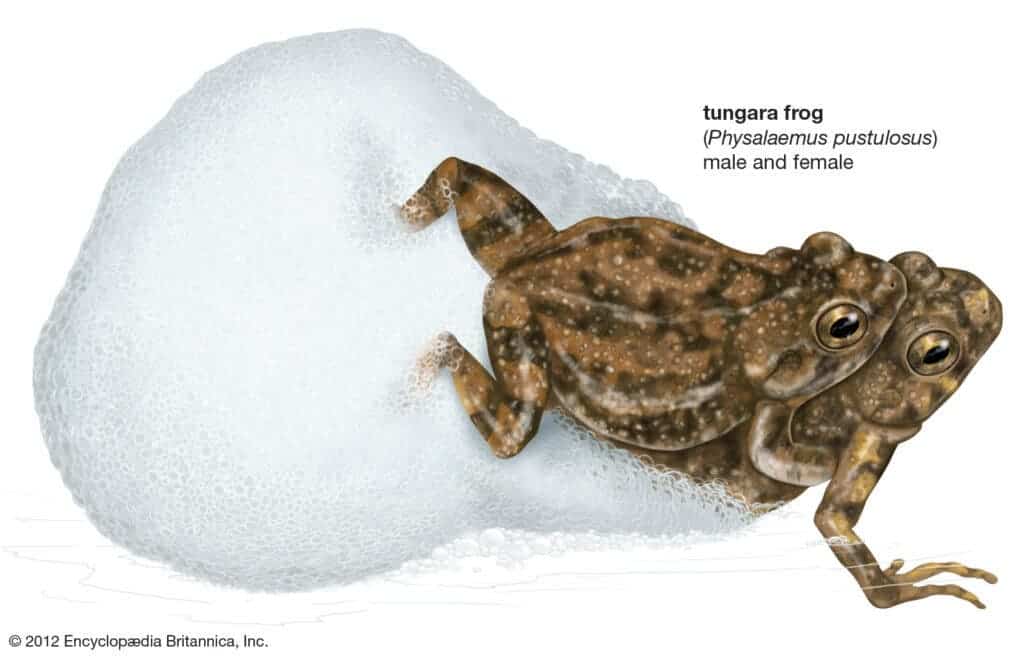
After mating, some tropical frogs will secure their eggs in foam that at the same time nurtures and shields growing embryos like a bubble-wrapping. In a new study, researchers found that this lathery substance, which contains proteins with antibacterial properties and is highly durable, could be an excellent medium for delivering drugs through the skin, providing an alternative to irritating synthetic foams and gels.
From the jungle to the lab
Most foams, whether it’s shaving, beer, or saliva foams, collapse within minutes. Some can last for hours. But the foams produced by the mating Túngara frogs (Engystomops pustulosus) can last for over a week — and that’s in harsh tropical environments to boot. Given the highly sensitive nature of a frog’s skin, the compounds in the foam are naturally biocompatible. When researchers became aware of all this, a light bulb instantly lit up.
Sarah Brozio, a former researcher at the University of Strathclyde in Glasgow, has been studying Túngara frogs and their foams in Trinidad since she was a graduate student. She teamed up with microbial biochemist Paul Hoskisson and pharmaceutical engineer Dimitrios Lamprou, who were curious whether the stability and structure of frog foams could support carrying and releasing drugs.
Using foam collected from halfway across the world, the team got busy testing the amphibian concoction in their lab in Scotland, where they employed a battery of tests that probed its composition and stability. In the process, they learned that the foam contains a mixture of proteins that share some properties with pharmaceutical foams without the drawbacks.
Most importantly, the foam derived from the tropical frogs is “stable enough to be manipulated and able to withstand shear forces, suggesting potential for the delivery of drugs over prolonged periods,” the researchers mentioned in a study published this week in Royal Society Open Science.

The foam contains densely packed bubbles called vesicles, which seemed sturdy enough to carry drug compounds. To put this theory to the test, the researchers inserted rifamycin, a common antibiotic, into the foam. The antibiotic was slowly but steadily released over the course of a week. That’s an almost perfect time frame since patients typically require an antibiotic regimen lasting five to 14 days.
“This is the first time an amphibian foam has been used for drug delivery,” Hoskisson told Smithsonian Mag, adding that the foams “should give us a really nice, safe delivery vehicle that can be administered to patients without any fear of making them sick, unlike many of the other synthetic delivery vehicles.”
Synthetic foams can only release drugs for 24 hours. What’s more, they can sometimes trigger allergies or irritate a patient’s skin. In this context, the frog foam could be a complete game-changer if it can be produced at a mass scale. Brozio showed that the foam could be produced without having to wait for frogs to copulate. She genetically engineered bacteria to contain frog DNA that produced six key proteins in the foam. Her lab foam was stable for 1-2 weeks, on par with the natural, love-tainted frog foam.
Tests on human skill cells in a petri dish showed that the foam was safe. In the future, the researchers will commence tests on pig skin, then live animals like mice and rabbits. If all goes well, clinical trials may commence that determine if the frog-inspired foam is viable for treating a range of ailments, such as infected wounds and burns.









